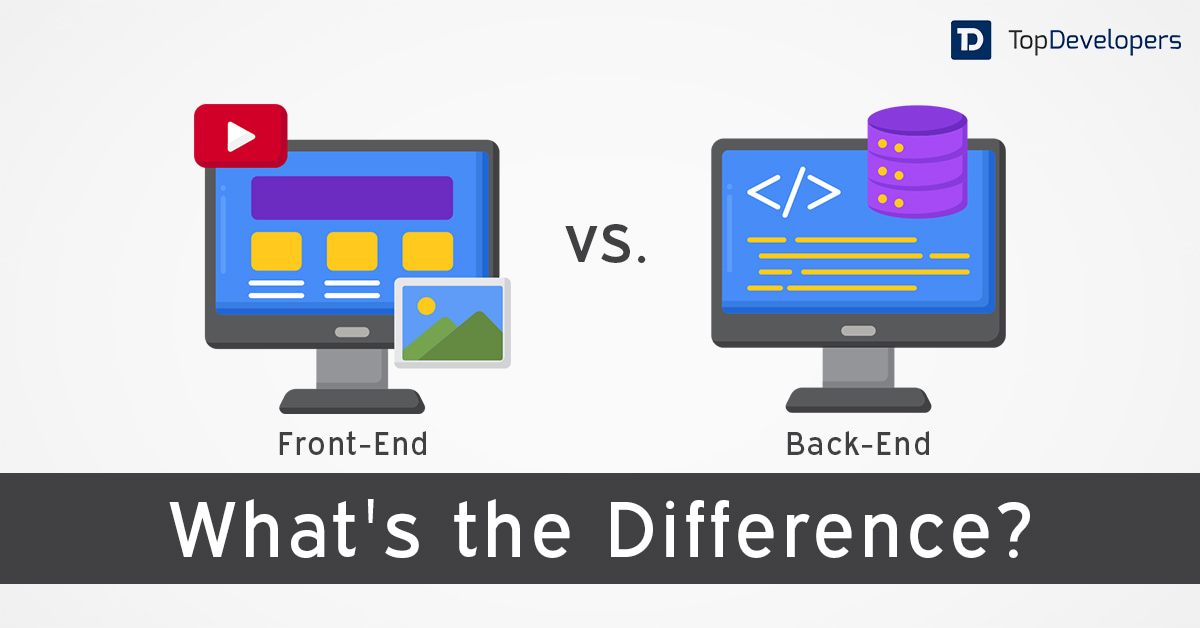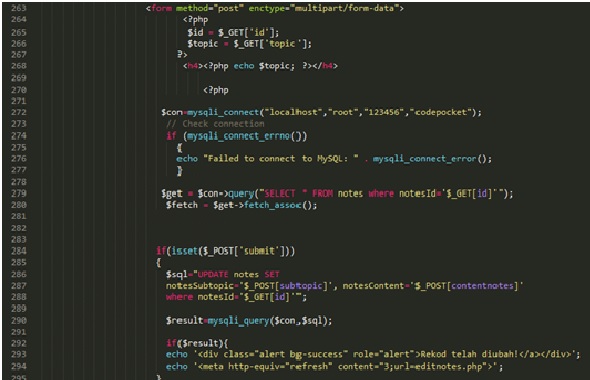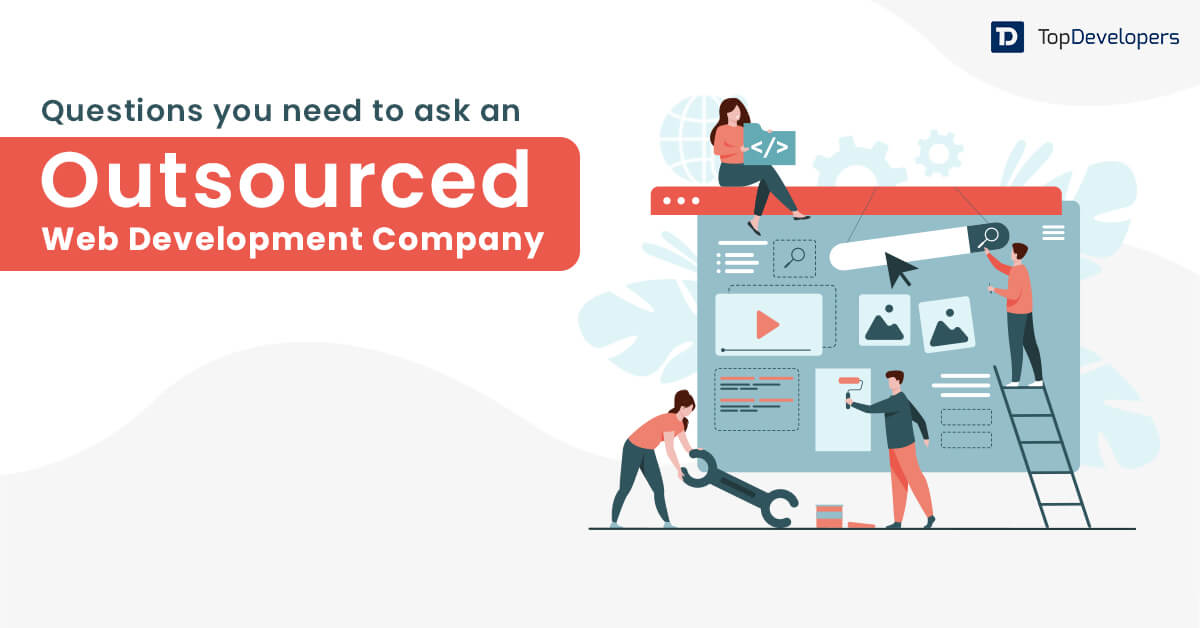
Summary:
Isn’t a website appealing and revealing at the same time? Doesn’t opening a website and going through every picture, graphic, and content make you feel acknowledged? It surely does. However, what amuses the most is – how is a beautiful, robust, and fully-functional website made? Well, web development involves two major components: frontend and backend web development. You may be familiar with the terms but not their particulars. This blog discusses front end vs back end in depth.
Web development is surely an exciting task but what majority of the people forget is that only highly-qualified web development companies can do this job efficiently so that the businesses achieve their share of success. This brings us to the question “why”? Why only people who have studied, trained and worked overtime on web development can create something like a “perfect website”? Well, it is because the term web development is fragmented into two major components – the frontend and backend development.
Both the components work hand in hand to create simple and even the most complex websites. Are these two integral parts of web development different as they sound to be? How does the development of a website depend on them? Is one more important or superior than the other?
Let’s find our answers!
Table of Contents
What Is Frontend Development?

Frontend means something that the eyes can see. In simpler terms, the final website that customers can see, use, and enjoy is called the Frontend. One who develops the Frontend is called a Front-end developer. The skilled and qualified developers build the designed user interface and user experience. In brief, the frontend developer gives life to web designs.
Key skills that the Frontend developer needs include:
- Knowledge about HTML, CSS, JavaScript.
- Should know about frameworks like Angular.js and ReactJS.
- In addition, they must also apprehend GIT and GITHUB (the version control system).
What Is Backend Development?

On the contrary, Backend development is more of “what goes behind” the Frontend. Through the Backend codes, the user’s actions are analyzed and delivered back. One who develops the backend of the website is called a Backend developer. The key job of the Backend developer is to link each element of the Frontend (website) with the database. In short, the Backend takes care of the “functionality” part of the website.
Key skills that the Backend developer needs include:
- Knowledge about PHP, laravel, NodeJS, Python, Java, Ruby, and other Backend languages.
- Must comprehend Database Management System (DBMS) and Application Program Interface(API).
Features of Frontend and Backend Development
Enlisted below are the key features of backend vs frontend. Read them carefully.
Frontend development
Client Side Rendering: allows the developers to render the website locally with JavaScript on the user’s browser.
Server-Side Rendering: the sites are rendered directly on the user’s browser. This rendering is based on the changes requested by the user.
Optimization: a website’s loading speed is important for the users. Therefore, HTML, CSS, and JavaScript are fine-tuned to give a website a quicker loading speed.
Backend development
Database: the database stores the necessary user data.
Website architecture: it basically involves understanding the web development goals.
Scripting: this includes proper framework formatting.
Application User Interface or API: it is a tool used to convey messages to the machine and derive necessary data.
Frontend and Backend Languages
The languages used in frontend and backend development are oceans apart. Here, see it yourself to believe what you just read!
Frontend development languages
HTML
It is the fundamental coding language. This markup language is used to create and organize the web content that’ll be displayed on the browser.
CSS
Think of CSS as HTML’s companion. This frontend language defines the style of the content such as its layout, font style, and even the font color.
JavaScript
This programming language is used to create more interactive elements on the web such as contact forms, drop-down menus, and much more.
Backend development languages
Python
This is probably the most commonly used backend development language. Developers like this language because it has huge libraries, it is versatile, the code is readable, etc.
PHP
PHP is also a popular backend development language. This language is known for its strengthful security, object-oriented programming features, cross-platform compatibility, and much more.
Java
Java is widely used to build Android and desktop applications. The other benefits of using this language include automatic memory allocation and portability.
Front End Vs Back End
Here’s the detailed difference between backend and frontend development that every website owner and soon to be web developers should know!
Key differences
1. The frontend of the website is the ‘visible’ part. This is where visitor can interact and take action. In short, the users can see this part. On the other hand, the backend is ‘not visible’ to the users. This part of the web development collects the data, processes, and handles the website’s functionality.
2. A frontend developer deals with designing the layout. Whereas, a backend developer takes care of the functionality.
3. As much as the respective developers should know about their genre, they also need to have knowledge of the other. That is, the frontend developer must have a working knowledgeabout the backend and vice versa.
Other major differences: backend vs frontend development
This table includes the other major difference between backend and frontend development.
| FRONTEND DEVELOPMENT | BACKEND DEVELOPMENT | |
|---|---|---|
| Definition | ||
| It involves the part where the visual components of a web application must be implemented effectively. |
Here, the functions of the web application must be properly implemented. It includes database, server management, etc. | |
| Required skill set | ||
| The basic skill set requires hands-on and knowledge of HTML, bootstrap, CSS, SASS, and JavaScript. |
The basic skill set requires hands-on and knowledge of PHP,laravel,codeigniterPython, Ruby, Java, | |
| Main purpose | ||
| The goal is that the web application remains accessible to all. Also, it should be responsive website to all platforms like laptops, smartphones, etc. |
The goal of backend development is to ensure that the web application works smoothly under all conditions. It should be scalable, have low latency, and must work efficiently. | |
| Role of the development team | ||
| The team is responsible for designing and developing ‘visual’ parts of the application. |
The team is responsible to link the frontend with the pages and provide security to the users. | |
Cost of Building a Perfect Website in 2023
How much does it cost to build a website? / How much does a professional website cost in 2023? Well, this is a question most of you might be asking right now. But, we have the answer ready for you.
Apart from the frontend vs backend development, there are many other factors responsible for deciding the final cost of website development.
These are the 5 key factors:
- Domain name
- Website functionality
- Website maintenance
- Size of the site
- Website hosting platform
The cost of website development varies in size, business, and even complexity. This table shows a rough estimation of the cost that you might have to pay to build a website. Ahh! Remember, another factor that can push through the cost is – the website development company that you may hire. There are a number of web development companies in the world. The choice depends on you, your business needs, and especially your budget. As a decision-maker for the business you need to make the final nod. So to help you make an informed decision here’s a guide for the entrepreneurs on cost to build a website.
Hire Only the Best Web Development Company
Experts will only recommend you to outsource website development. Why? The weighty reasons why you must outsource include;
- It allows you to save so much money.
- Gives you access to a larger pool of talent to hire from.
- It elevates the scalability of your project.
- Reduces the risks of expensive mistakes.
- The professionals work speedily!
Now that you have the checklist and the key difference between backend vs frontend development, it is time you take up a wise decision. Put your right foot forward by hiring experts to build your business website!
Conclusion
Wrapping up, the frontend and backend web development are two parallel concepts that go hand in hand during website development. While the frontend is the visible part of the website, the backend is what goes behind the scenes. No matter what role they play, both are crucial to dispensing a satisfactory customer experience whenever they open your website!
 Avantika Shergil
| Jun 17, 2022
Avantika Shergil
| Jun 17, 2022
An enthusiastic Operations Manager at TopDevelopers.co, coordinating and managing the technical and functional areas. She is an adventure lover, passionate traveler, an admirer of nature, who believes that a cup of coffee is the prime source to feel rejuvenated. Researching and writing about technology keeps her boosted and enhances her professional journeying.





